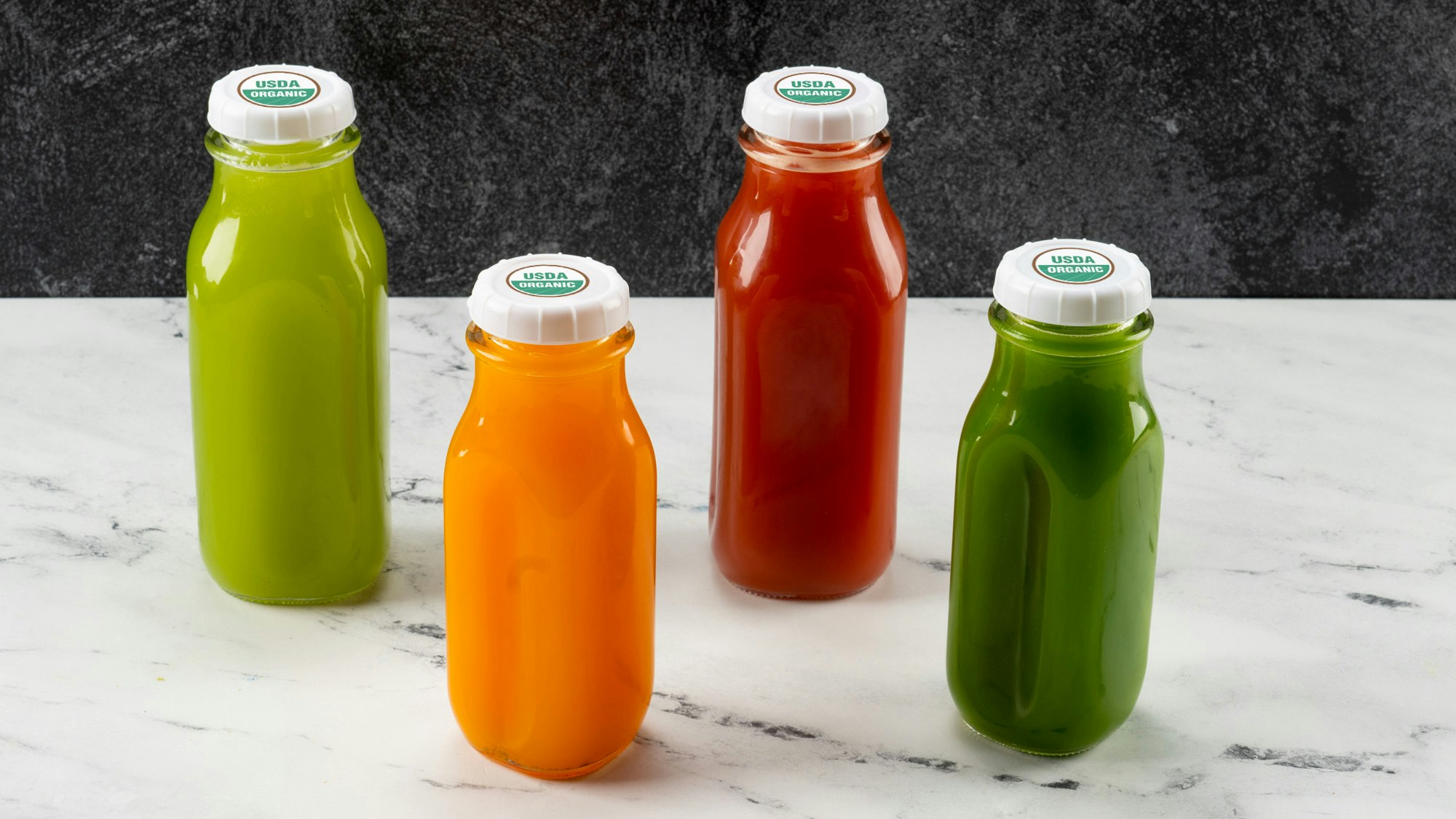Guest post by Ari, professional chef and cold pressed juice consultant. For consulting inquires, please contact us or see our consulting services page. To get the glass bottles pictured above, go the the Goodnature Marketplace and shop glass bottles.

Is becoming USDA Certified Organic right for your business?
There’s not a lot of information available about going through the process of becoming certified organic for cold pressed juice. After going through the tedious process myself, I was able to come up with a list of my top 5 tips for anyone considering starting the process.
1. Become comfortable with operating an excel spreadsheet.
If you become certified organic, it’s safe to say you will have an average of seven plus running logs that need to be filled out daily. I would much rather click through a spreadsheet or folder to find information I am looking for, than rifling through a stack of crinkled papers. Always back up your files to multiple locations when possible as well. At the end of the month, scan any physical papers you have and make the folders easily accessible. Becoming organized with your paperwork and being a master at excel will help you with through every step of the process. Several of the next tips on this page depend on this first one.

2. Create multiple organic recipes to cover every season.
There are very few juice blend recipes that can be consistent or top quality year round. You can’t always get beautiful kale or granny smith apples in the summer or perfect watermelon in the winter. If the product is out of season you will most likely be paying more for a sub-par product. In contrast, when you get an organic product that is in season the flavor can’t be beat. If you are serving a certified organic juice blend, each product in the juice should should be by weight, since that is what the USDA looks for.

3. Create your own product seasonal availability list on a spreadsheet.
I can’t tell you how great it is to click on a month when developing a new recipe and have a list of all the fruits and vegetables that will be available during that season. On this same spreadsheet, make sure to keep yield data. Strong flavored products like ginger can overpower other flavors if you didn’t test the recipe while that specific product was in season.
4. Become friends with your supplier/purveyor of organic products.
You will need to rely on them not only to keep you updated on the market reports, but you will also need them to provide a bit of paperwork for you for the organic certification application. (Organic certifications, clean transport affidavit, etc.) Your suppliers will end up being a major asset to you when going through the process, be nice to them!
5. Get familiar with what the local health department and department of agriculture requirements.
Bottom line is, for both departments, they want you to put out a properly labeled safe product for the consumer. Health department will focus mostly on your HACCP plan making sure each step that could be potentially dangerous and that you are taking the proper preventative actions to put out a safe product. Learn more about navigating the health department here. The Department of Agriculture (USDA) wants to make sure your product is in fact from a certified organic farm. They will want to know the entire path the fruit or vegetable takes from the farm to your kitchen to the consumer, as well as some form of tracking system for the product. They should be able to come in for an annual audit and ask, for example, where your carrots came from last year on March 3rd. This once again is why excel is very important for logging information.

Final Thoughts
This post is not to deter anyone away from becoming certified organic; it is actually to serve as the opposite. It is to let you know that the process is long and will take a while to get going; there will always be an issue or “opportunity” to improve. But making mistakes is definitely a necessary part of the process, and after time, you and your team will become very comfortable with understanding the process because of these mistakes and it will become second nature.
Once it’s all said and done, you will look back at all the hard work and long hours you put into this process, you can’t help but take pride in the product you’ve created and will be able to share. That, to me, is one of the most important parts of any operation and what could potentially set you apart from the competition, taking pride in the product you produce.

Comments
We are interesting for starting our Juice business from home.
Awaiting best of best products + best startup documents
Thanks.
Umesh Patel
(614)642-2761
Hi Umesh, one of our team members will be in touch via email soon
why would you want to become usda certified organic?
Having the certification seal on your products gives customers confidence that they can trust the Organic claim. Many companies claim organic but are not. Although it is still possible to do this after getting the certification, it is less likely.
Excelent review! Hope we learn more every day!
i am looking to build cold press into my bag of tricks , how to do at a slightly larger than home / cafe
style production - without having to spend thousands - cheers
Chef Billy, unfortunately making cold pressed juice on a commercial level takes thousands of dollars. There's simply no way around it. However, the return on investment is huge.




Comment